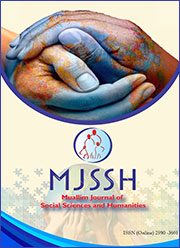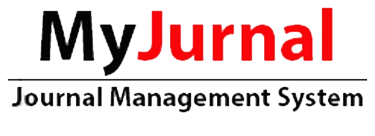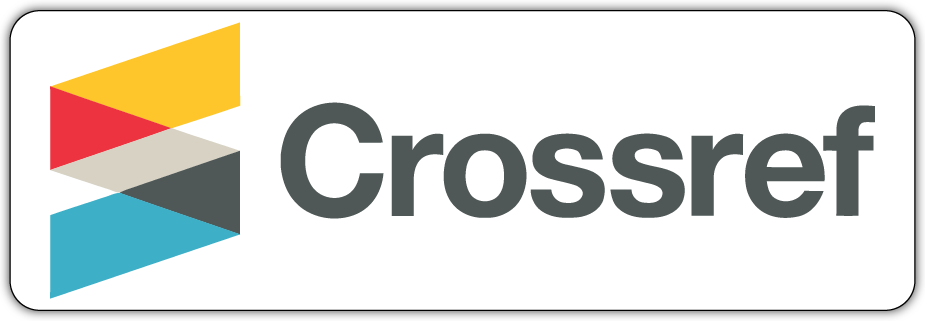Socio-emotional and behavioral characteristics of dyslexic students in Sri Lanka: a study based on multiple case study method
Keywords:
Dyslexia, socio-emotional, behavioral characteristics, multiple case study method, thematicallyAbstract
According to the World Declaration of “Education for All,” children, including those with dyslexia, have a right to education. In alignment with this, studies offering different perspectives on the education of dyslexic students have been carried out in many countries. However, it is rare to identify research conducted in this area. Therefore, the aim of this study is to investigate the socio-emotional, health states and behavioral characteristics of dyslexic students in Sri Lanka. The study followed a qualitative research paradigm, adopting a multiple case study method and selecting 10 participants from a hospital for children in Colombo. In-depth interviews, observations, and medical reports of the dyslexic students were used as data collection methods. The generated data and information were analyzed and interpreted thematically using a qualitative comparative analysis. The findings revealed that the general appearance and physical fitness of the dyslexic students were at a considerable level. They carried out daily routine activities independently; however, they did not maintain good relationships with teachers and peers. Conversely, they had strong relationships with family members. Other findings included bedwetting, differences in walking styles, difficulties in managing fine motor skills, and the use of various defense mechanisms to hide failures and carelessness. These findings were informative in identifying the basic health conditions and behavioral characteristics among dyslexic students in Sri Lanka. They also provide insight into relevant intervention methods to address behavioral challenges and enhance the socio-emotional relationships of dyslexic students.
References
British Dyslexia Association. (2007). Definition of Dyslexia. (Online) Bracknell: BDA. Available from: http://www.bdadyslexia.org.uk/about–dyslexia/further-information/dyslexia-research-information-html
Casalis, S., Leuwers, C., & Hilton, H. (2012). Syntactic comprehension in reading and listening: A study with French children with Dyslexia. Journal of Learning, 46(3), 2010-2219.
Charoo, S. G., Jimit, S. P., & Pratic, J. S. (Jan-March, 2011). Dyslexia: The Developmental Reading Disorder, vol:1, 88-97, from: http//www.ipharmusciancia.com.
International Dyslexia Association. (2010). Knowledge and practice standards for teachers of reading. Retrieved from http://www.readingrockets.org/sites/default/ files/IDA%20Knowledge%20and%20Practice%20Standards%20for%20Teaching%20of%20Reading.pdf.
Kandanarachchi, J., & Abeykoon, J. (2021). LEXIS: A preliminary screening and intervention tool for children with Dyslexia. International Conference on Advanced Research in Computing (ICARC-2021) “Towards a Digitally Empowered Society”. http://repo.lib.sab.ac.lk:8080/xmlui/handle/123456789/1757
Lyon, G. G. (2003). A definition of dyslexia. Annals of Dyslexia, 53, 1-14.
Mann,V. A., Shankwellier, D. P., & Smith, S. T. (1984). The association between comprehension of spoken sentences and early reading ability: The role of phonitic representation. Journal of Child lanuae, 11, 627-643.
Morton, J. (2004). Understanding developmental disorder: A causal model approach. Lackwell Publishing.
Palihawadana, P. (7-13 February 2015). Dyslexia. Weekly Epidemiological Report, 42(7).
Rispens, J. E. (2004). Syntactic and Phonological Processing in Developmental Dyslexia. (Doctoral Dissertation). Rijkuniversiteit Groningen, Netherland. Groningen: Print Partners Ipskamp Enschede. Retrieved from https://www.researchgate.net/ profile/Judith_Rispens/publication/30479925_Syntactic_and_phonological_processing_in_developmental_dyslexia/links/549027520cf225bf66a81de9/Syntactic-and-phonological-processing-in-developmental-dyslexia.pdf
Safeek, N. M. M., Hock, K. E., & Nachiappan, S. (2023). An investigation on the instructional practices followed by teachers on children with reading difficulties in primary classes. Muallim Journal of Social Sciences and Humanities, 7(1), 28–40. https://doi.org/10.33306/mjssh/222
Senarath, S. (2019). Anxiety and self-esteem among children with dyslexia in Sri Lanka. In E. Witruk & D. S. Utami (Eds.), Studies in Educational and Rehabilitation Psychology: Traumatic Experiences and Dyslexia (Vol. 8) (pp.197-203). Peter Lang.
Wang, X., George, K. G., Das, J. P., & Qing, L. (2012). Cognitive processing skills and development Dyslexia in Chinese. Journal of Learning Disabilities, 45(6), 526- 537.
Wijerathna, W. G .D. T. D., Wijesekara, N. W. N. Y., Wijesingha, R. T, & Kariyawasam, S. H. (2003). Learning difficulties in children attending a special clinic at the Lady Ridgway hospital. Sri Lanka Journal of Child Health,32, 96-104.
Witruk, E. (1993). Memory deficits of Dyslexic children. In P. Tallal, M. A. Galaburda, R. Llinas, & C. von Euler (Eds.), Temporal Information Processing in the Nervous System. Special reference to dyslexia and dysphasia. Annals of the New York Academy of Sciences, 682, (pp.430-435). The New York Academy of Sciences.
Witruk, E. (2006, January). Dyslexia-Assessment and Treatment. Paper presented at the International Workshop Institute of Psychology II, University of Leipzig, Germany.
Witruk, E. (2010, January). Dyslexia-Assessment and Treatment. Paper presented at the International Workshop Institute of Psychology II, University of Leipzig, Germany.
Wolf, M., & Obregon, M. (1992). Early naming deficits, developmental dyslexia, and a specific deficit hypothesis. Brain and Language, 42(3), 219-247.
World Bank Group. (2000, April 26). Education for all – from Jomtien to Dakar and Beyond. http://www.worldbank.org/
World Health Organisation. (2015). International Statistical Classification of Diseases and Related Health Problems 10th edition. http://apps.who.int/classifications/ icd10/browse/2015/en
Yin, R. K. (2009). Case study research – Design and methods (4th ed.). SAGE. https://www.who.int/standards/classifications/classification-of-diseases
Published
 Abstract Display: 0
Abstract Display: 0  PDF Downloads: 0
PDF Downloads: 0 Issue
Section

This work is licensed under a Creative Commons Attribution-NonCommercial 4.0 International License.














 This work is licensed under a
This work is licensed under a